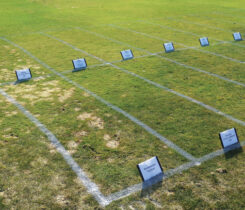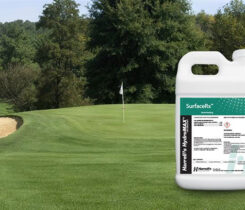Puttin’ Down Roots: Drought injury or bugs?
By Karl Danneberger, Ph.D.
Given the high temperatures and low moisture levels for most of the United States this past summer, drought has been blamed as the primary culprit for turf loss in many fairways and roughs. Although drought stress is prevalent, it is not the only cause for turf loss.
Given the high temperatures and low moisture levels for most of the United States this past summer, drought has been blamed as the primary culprit for turf loss in many fairways and roughs. Although drought stress is prevalent, it is not the only cause for turf loss. As a general rule if the turf does not green up with the arrival of adequate rainfall, the problem may be something else.
This past summer, two insect pests were involved in causing turf damage: billbugs (Kentucky and Hunting) and chinch bugs.
Billbug damage was most obvious along bunker faces, and along mounds. On golf courses, the most misdiagnosed billbug injury occurs along bunker faces. Billbug injury is usually detected by pulling on the injured turf to see if the shoots are easily removed. Inspect the base of the sheath for a frass. Frass is the waste product left behind as the billbug grubs feeds down through the sheath.
Chinch bug is not a common pest on golf course turf, but given the mild winter and warm spring, chinch bug populations no doubt were high. The arrival of summer drought conditions resulted in the chinch bugs feeding on succulent or irrigated turf. Damage was prevalent on tees and fairways. Chinch bugs can be found along the outer edges of the damaged area. Rarely will you find them where the turf is dead.
Karl Danneberger, Ph.D., is Golfdom’s science editor and a professor at The Ohio State University. He can be reached at danneberger.1@osu.edu.












